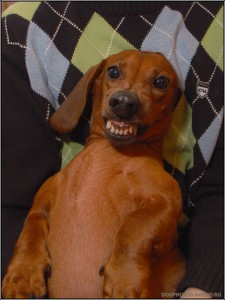3 Signs of Aggression to Watch for in Dogs

Aggression can be categorized into dominant or defensive aggression. Hostility can be brought on by several different variables such as fear, pain, environment, breed, and health. Depending on their behavior and reasoning you can see if the aggression is dominant or defensive.
Dominant Aggression
Signs of dominant aggression include urinating or lifting leg for male dogs because it marks territory and reinforces to other animals that they are on someone else’s space. Dogs displaying dominance will also have raised hackles to appear bigger and more intimidating. While this can be a defensive stance it can be dominant as well if the dog is emitting a low growl instead of bark and stare intently.
Dominant dogs will mount other animals and legs of humans as well as push children out of the way. This is because dominant dogs demand all the attention and all of the affection they can obtain The dog may also show food aggression for similar reasons.
If your dog is displaying dominant aggression there are a few things you can do to correct their behavior. First and foremost be sure to never allow a dog to have dominant status of any human, adult or child. By ensuring they are in the lower rank in the family they will not have a chance to challenge the dynamic and will stay submissive. If you are mostly sedentary or quiet you may not want a young, headstrong dog such as a Doberman or German Shepherd because they will become restless and try to control their environment. If you do own a dog whose breed is known as a protective dominant breed you will want to have clear and strict rules and commands with your dog. This way they will not become confused or frustrated.
Defensive Aggression
Dogs displaying defensive aggression are much less threatening and intimidating. They will often have ears pinned back, panting, and avoiding eye contact. This is to show they are standing their ground but do not feel comfortable or confidant. Dogs in a defensive stance may avoid contact with humans (opposite of dominant dogs), avoid petting or physical contact, and will shy away from those attempting to give the dog attention. Basically trying to create as much space around themselves as possible.
If your dog is displaying defensive aggression you may want to try socializing your dog gradually over time. This will help them discern what situations are safe and which ones are dangerous. This will also help you see what sort of situations your dog is comfortable in.
Warning: Trying to access array offset on value of type bool in /home/newgfp/public_html/wp-content/themes/base/includes/social-sharing.php on line 19
